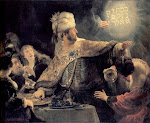However, when it comes to natural features or historic ruins, graffiti has no place - the location distracts from any potential message or content in the markings. For example, check out the above image of the smeared mess of a sloppy, unclear and ugly "tag" that was recently deposited on the historic ruins of Foushee's Mill built in 1819 down by Texas Beach. In this misguided smudge, I can only read a single word: LOSER.
Monday, March 31, 2014
a misguided smudge
However, when it comes to natural features or historic ruins, graffiti has no place - the location distracts from any potential message or content in the markings. For example, check out the above image of the smeared mess of a sloppy, unclear and ugly "tag" that was recently deposited on the historic ruins of Foushee's Mill built in 1819 down by Texas Beach. In this misguided smudge, I can only read a single word: LOSER.
Saturday, February 8, 2014
Graffiti as memorial & public reminder
Sometimes graffiti can be of a memorial nature, a fleeting reminder of local history, good and bad. Here the reminder is a grisly one - we can barely see some pinkish script on the handrail of the Northbank Park walkway. It reads:
It's a significant step beyond simply ending a life.
Since I love to walk the trails of our 550 acres of parkland, this story creeped me out and compelled me to write an editorial about it questioning why there was not a more aggressive investigation of such a grisly murder. STYLE rejected my essay and offered little coverage of the bizarre event until New York's Village Voice came out with a front page story about the murder as a potential hate crime on April 6, noting in the article that "fully a month after his death, Richmond police have still failed to release the cause of death and the local medical examiner has yet to issue an autopsy report."
The article describes the area (sometimes known as "Texas Beach") as a gay cruising area but these days all types of folk head down to the riverside there to relax with friends, cool off, sunbathe nude, party or skinny-dip. And straight, bi or gay, sometimes they even hookup in those wild riverside woods.
The memento mori graffiti has long since been painted over, but for a brief moment people were reminded of Northington's gory death and perhaps walked with more care & awareness on our glorious riverside trails. I've been hiking in the area ever since and have never run into any trouble, though I always pay attention to my surroundings - as we all should whenever we're out and about. With Richmond's surge in population since that time, there are more people on the trails which makes them safer with more potential witnesses or allies should a crime occur.
HATE CRIME
SUMMER
1998
DECAPITATED
HEAD
OF
GAY
MAN
The script gets the date wrong but includes an arrow pointing to the spot where the severed head of Henry Edward Northington was found by a couple on a morning walk on March 1, 1999. Though Northington's sexuality could have been a possible motive, I would argue that any decapitation should be considered a hate crime. It's a significant step beyond simply ending a life.
The article describes the area (sometimes known as "Texas Beach") as a gay cruising area but these days all types of folk head down to the riverside there to relax with friends, cool off, sunbathe nude, party or skinny-dip. And straight, bi or gay, sometimes they even hookup in those wild riverside woods.
The memento mori graffiti has long since been painted over, but for a brief moment people were reminded of Northington's gory death and perhaps walked with more care & awareness on our glorious riverside trails. I've been hiking in the area ever since and have never run into any trouble, though I always pay attention to my surroundings - as we all should whenever we're out and about. With Richmond's surge in population since that time, there are more people on the trails which makes them safer with more potential witnesses or allies should a crime occur.
Subscribe to:
Comments (Atom)





